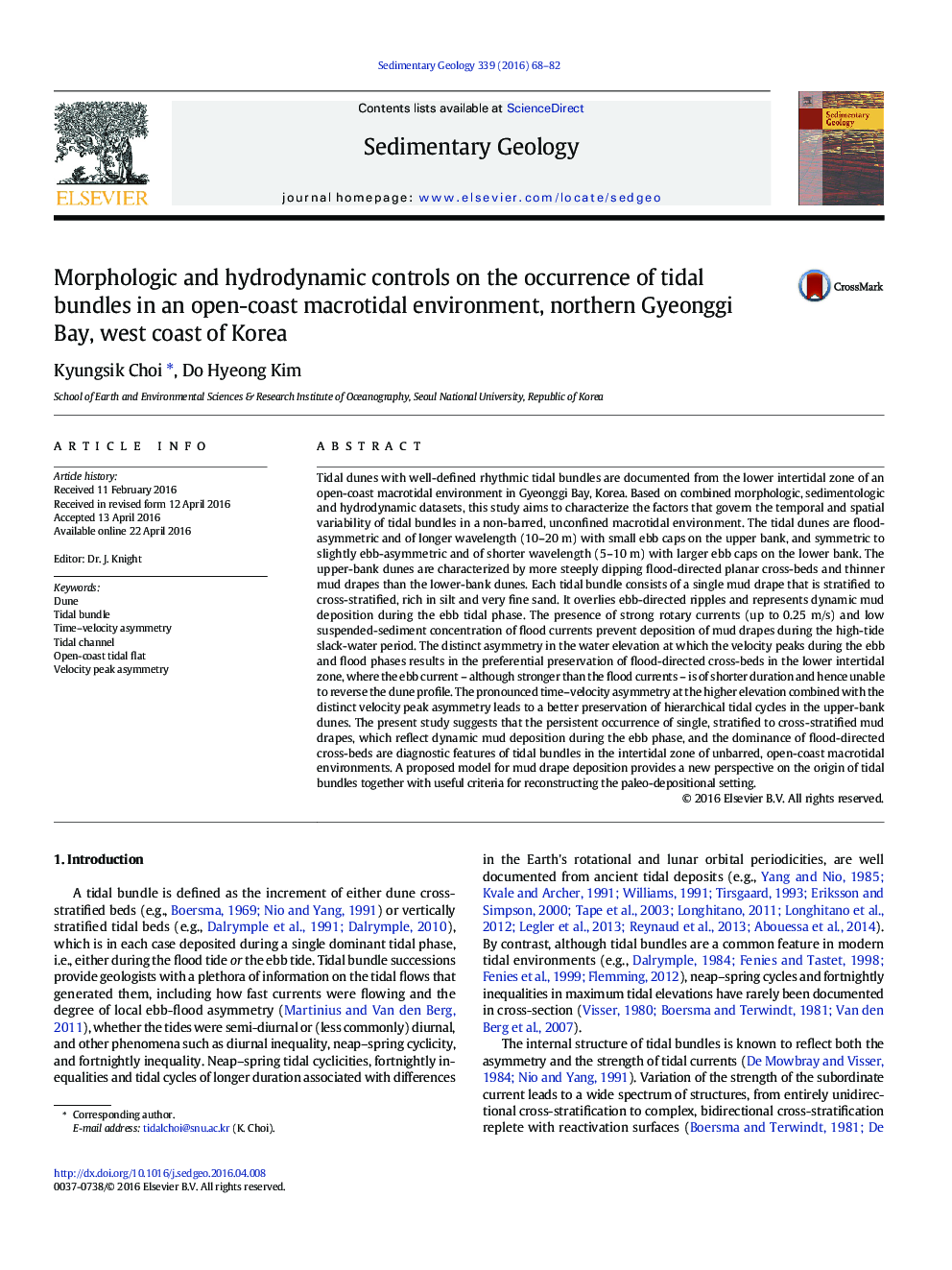| کد مقاله | کد نشریه | سال انتشار | مقاله انگلیسی | نسخه تمام متن |
|---|---|---|---|---|
| 6433150 | 1636024 | 2016 | 15 صفحه PDF | دانلود رایگان |
- Tidal bundles in an open-coast macrotidal environment incorporate single, stratified to cross-stratified mud drapes representing dynamic mud deposition during ebb tides.
- A strong rotary current and low suspended sediment concentration prevent the formation of mud drapes during the high-tide slack-water period.
- Hierarchical tidal cycles are best preserved in the dunes on the upper bank where time-velocity asymmetry and velocity peak asymmetry are most pronounced.
- Pronounced time-velocity asymmetry, velocity peak asymmetry and the short duration of high-tide slack-water period play a key role in the variability of tidal bundles.
- Tidal bundles are useful indicators of the morphological setting of tidal environments as well as the elevation along the intertidal gradient.
Tidal dunes with well-defined rhythmic tidal bundles are documented from the lower intertidal zone of an open-coast macrotidal environment in Gyeonggi Bay, Korea. Based on combined morphologic, sedimentologic and hydrodynamic datasets, this study aims to characterize the factors that govern the temporal and spatial variability of tidal bundles in a non-barred, unconfined macrotidal environment. The tidal dunes are flood-asymmetric and of longer wavelength (10-20Â m) with small ebb caps on the upper bank, and symmetric to slightly ebb-asymmetric and of shorter wavelength (5-10Â m) with larger ebb caps on the lower bank. The upper-bank dunes are characterized by more steeply dipping flood-directed planar cross-beds and thinner mud drapes than the lower-bank dunes. Each tidal bundle consists of a single mud drape that is stratified to cross-stratified, rich in silt and very fine sand. It overlies ebb-directed ripples and represents dynamic mud deposition during the ebb tidal phase. The presence of strong rotary currents (up to 0.25Â m/s) and low suspended-sediment concentration of flood currents prevent deposition of mud drapes during the high-tide slack-water period. The distinct asymmetry in the water elevation at which the velocity peaks during the ebb and flood phases results in the preferential preservation of flood-directed cross-beds in the lower intertidal zone, where the ebb current - although stronger than the flood currents - is of shorter duration and hence unable to reverse the dune profile. The pronounced time-velocity asymmetry at the higher elevation combined with the distinct velocity peak asymmetry leads to a better preservation of hierarchical tidal cycles in the upper-bank dunes. The present study suggests that the persistent occurrence of single, stratified to cross-stratified mud drapes, which reflect dynamic mud deposition during the ebb phase, and the dominance of flood-directed cross-beds are diagnostic features of tidal bundles in the intertidal zone of unbarred, open-coast macrotidal environments. A proposed model for mud drape deposition provides a new perspective on the origin of tidal bundles together with useful criteria for reconstructing the paleo-depositional setting.
Journal: Sedimentary Geology - Volume 339, 15 June 2016, Pages 68-82
